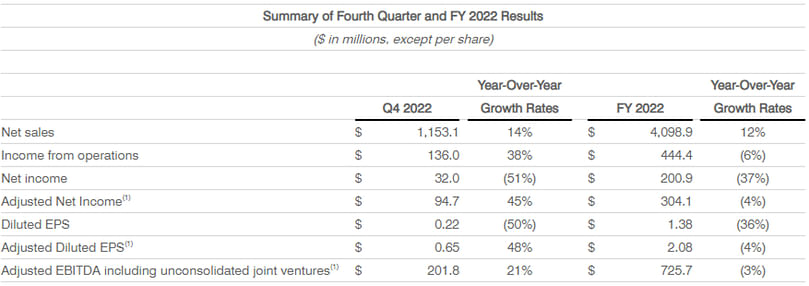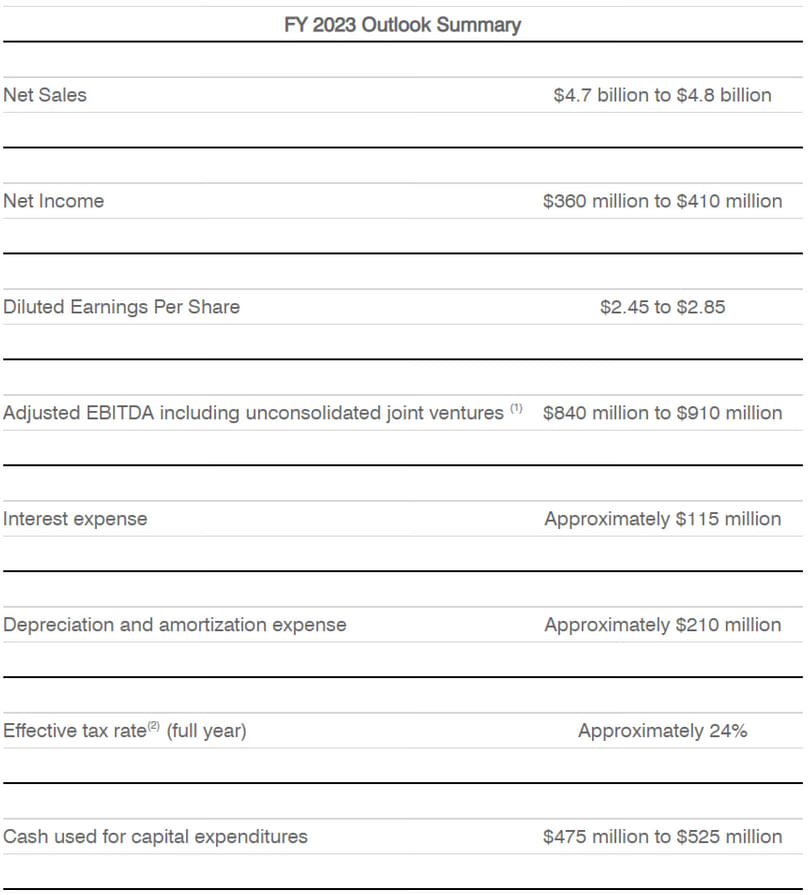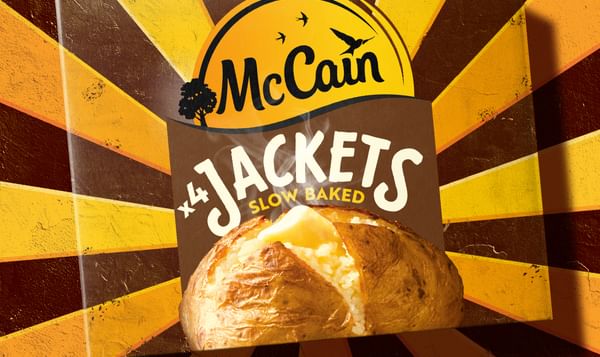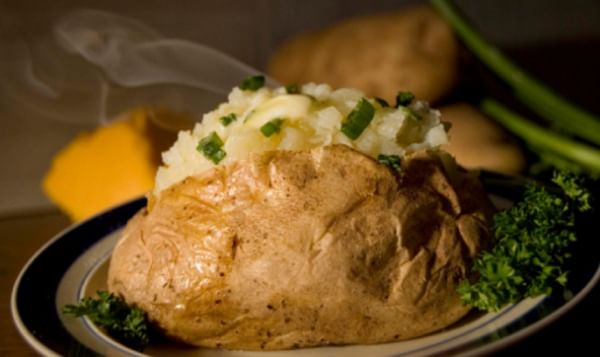Potato Processor Lamb Weston Reports Fiscal Fourth Quarter and Full Year 2022 Results; Provides Fiscal Year 2023 Outlook
Lamb Weston Reports Fiscal Fourth Quarter and Full Year 2022 Results

Lamb Weston Holdings, Inc. (NYSE: LW) announced its fiscal fourth quarter and full year 2022 results and provided its outlook for fiscal 2023.
Tom Werner, President and CEO of Lamb Weston Holdings, Inc.:
"We finished the year on a strong note, including a record high sales quarter fueled by double-digit growth in each of their core segments. Their fiscal 2022 performance is a testament to the strength and dedication of the entire Lamb Weston team."Q4 2022 Commentary
"Benefits from their pricing actions, productivity, simplification, and cost mitigation efforts continued to build through the year as we managed increases in input and transportation costs, constraints in global logistics networks, and the impact of a historically poor potato crop. Their sales volumes throughout the year also held up well despite volatile consumer demand and supply chain disruptions."
"We enter this new fiscal year with strong underlying fundamentals and business momentum, and believe their financial targets of strong sales growth and continued improvement in profitability in fiscal 2023 are prudent in light of the current challenging operating and inflationary environment."
"Specifically, their targets include gross margins approaching normalized levels during the second half of fiscal 2023 behind higher pricing in each of their core segments, an average potato crop, a broad easing of cost and logistics pressures across their supply chain, and continued productivity and cost mitigation efforts."
"We continue to be encouraged by the resiliency of U.S. restaurant traffic and french fry demand as consumers adjust to sharp inflation headwinds."
"We remain confident in the health and long-term growth prospects for the global frozen potato category, and we are committed to executing their strategies, investing in their people and operations, and supporting their customers in order to drive sustainable, profitable growth and create value for their shareholders over the long term."
Net sales increased USD 145.6 million to USD 1,153.1 million, up 14 percent versus the prior year quarter. Price/mix increased 15 percent, primarily reflecting the benefit of pricing actions across each of the Company’s core business segments to offset input, manufacturing, and transportation cost inflation.
Volume declined 1 percent, primarily reflecting lower export volume due to limited shipping container availability and disruptions to ocean freight networks. Total volume in North America increased behind shipments to large chain restaurant customers.
This growth more than offset lower shipments to food service and retail channels in North America stemming from an inability to fully serve customer demand due to widespread industry supply chain constraints, including labor and commodities shortages, that resulted in lower production run-rates and throughput in the Company’s production facilities.
Income from operations increased USD 37.1 million to USD 136.0 million, up 38 percent versus the prior year quarter, reflecting higher gross profit, partially offset by higher selling, general and administrative expenses ("SG&A"). Gross profit increased USD 56.2 million, as the benefits from higher price/mix more than offset the impact of higher manufacturing and distribution costs on a per-pound basis, as well as lower sales volumes.
The higher costs per pound primarily reflected double-digit cost inflation from key inputs, including: edible oils, ingredients such as grains and starches used in product coatings, packaging, labor costs, and higher transportation costs.
The increase in costs per pound also reflected higher costs and inefficiencies associated with the impact of extreme summer heat that negatively affected the yield and quality of potato crops in the Pacific Northwest in fall 2021, the effects of labor and commodities shortages on production run-rates, and production downtimes associated with scheduled maintenance and capital improvements.
The increase in per pound costs was partially offset by supply chain productivity savings. The increase in gross profit also included a USD 7.9 million decrease in unrealized mark-to-market adjustments associated with commodity hedging contracts, which includes a USD 0.1 million gain in the current quarter, compared with an USD 8.0 million gain related to these items in the prior year quarter.
SG&A increased USD 19.1 million compared to the prior year quarter, primarily due to higher incentive compensation expense and a USD 3.5 million contribution to the Lamb Weston charitable foundation. The increase in SG&A was partially offset by lower consulting expenses associated with improving the Company’s commercial and supply chain operations, and a USD 2.4 million decrease in advertising and promotion expenses ("A&P").
Net income was USD 32.0 million, down USD 33.5 million versus the prior year quarter, and Diluted EPS was USD 0.22, down USD 0.22 versus the prior year quarter.
The decreases were driven by a USD 62.7 million non-cash impairment charge (before and after-tax, or USD 0.43 per share) to write off the Company’s portion of Lamb-Weston/Meijer v.o.f’s ("LWM") net investment in Russia resulting from LWM’s announced intent to withdraw from its joint venture in response to the war in Ukraine. These charges were partially offset by higher income from operations and lower interest expense.
Adjusted Net Income(1) was USD 94.7 million, up USD 29.2 million versus the prior year quarter, and Adjusted Diluted EPS(1) was USD 0.65, up USD 0.21 versus the prior year quarter. Adjusted EBITDA including unconsolidated joint ventures(1) increased USD 35.5 million to USD 201.8 million, up 21 percent versus the prior year quarter. These increases were driven by higher income from operations.
The Company’s effective tax rate(2) in the fourth fiscal quarter was 41.2 percent, versus 17.9 percent in the prior year quarter. The Company’s effective tax rate varies from the U.S. statutory tax rate of 21 percent principally due to the impact of U.S. state taxes, foreign taxes, permanent differences, and discrete items, and was elevated relative to the Company’s historical rate primarily due to the Russia impairment charge treated as a non-deductible permanent difference. Excluding the Russia impairment charge, the Company’s effective tax rate was 19.1 percent.
Q4 2022 Segment Highlights
Global
Net sales for the Global segment, which is generally comprised of the top 100 North American-based quick-service ("QSR") and full-service restaurant chain customers as well as all of the Company’s international sales, increased USD 48.8 million to USD 558.4 million, up 10 percent versus the prior year quarter, with price/mix up 10 percent and volume flat.
The benefit of domestic and international product and freight pricing actions to offset inflation, as well as favorable mix, drove the increase in price/mix. A solid increase in sales volumes to North American large QSR and casual dining restaurant chain customers was offset by lower export shipments due to limited shipping container availability and disruptions to ocean freight networks.
Global segment product contribution margin declined USD 0.7 million to USD 55.7 million, down 1 percent versus the prior year quarter. Higher manufacturing and distribution costs per pound more than offset the benefit of favorable price/mix.
Foodservice
Net sales for the Foodservice segment, which services North American foodservice distributors and restaurant chains generally outside the top 100 North American based restaurant chain customers, increased USD 68.4 million to USD 388.4 million, up 21 percent versus the prior year quarter, with price/mix up 24 percent and volume down 3 percent. The benefits of product and freight pricing actions taken earlier in the year to offset inflation drove the increase in price/mix.
Overall demand in the segment’s restaurant and non-commercial channels (such as lodging and hospitality, healthcare, schools and universities, sports and entertainment, and workplace environments) remained solid in the quarter despite the effect of high inflation on consumers.
However, shipments declined due to an inability to fully serve customer demand due to widespread industry supply chain constraints, including labor shortages, as well as downtimes for scheduled maintenance and capital improvements that resulted in lower production run-rates and throughput in the Company’s production facilities.
Foodservice segment product contribution margin increased USD 45.5 million to USD 141.8 million, up 47 percent compared to the prior year quarter. Favorable price drove the increase, and was partially offset by higher manufacturing and distribution costs per pound.
Retail
Net sales for the Retail segment, which includes sales of branded and private label products to grocery, mass merchant, and club customers in North America, increased USD 29.6 million to USD 175.9 million, up 20 percent versus the prior year quarter, with price/mix up 22 percent and volume down 2 percent.
Product and freight pricing actions across the branded and private label portfolios to offset inflation, as well as improved mix, drove the increase in price/mix. Lower shipments of private label products, resulting from incremental losses of certain low-margin business, drove the sales volume decline.
The volume decline was partially offset by an increase in shipments of branded products, although growth was tempered by an inability to fully serve customer demand due to lower production run-rates and throughput in the Company’s production facilities.
Retail segment product contribution margin increased USD 20.4 million to USD 41.6 million, up 96 percent versus the prior year quarter. Favorable price/mix and a USD 3.1 million decrease in A&P expenses drove the increase, partially offset by lower sales volumes and higher manufacturing and distribution costs per pound.
Equity Method Investment Earnings (Loss)
Equity method investment earnings (loss) from unconsolidated joint ventures in Europe, the U.S., and South America were a loss of USD 56.7 million and earnings of USD 9.6 million for fourth quarter fiscal 2022 and 2021, respectively. Equity method investment earnings (loss) in the fourth quarter of fiscal 2022 included a USD 62.7 million non-cash impairment charge to write-off the Company’s portion of LWM’s net investment in Russia.
Equity method investment earnings also included a USD 1.0 million unrealized loss related to mark-to-market adjustments associated with currency and commodity hedging contracts in the current quarter, compared to a USD 4.5 million unrealized gain related to these items in the prior year quarter.
Excluding the charge to write-off the Company’s portion of LWM’s net investment in Russia and the mark-to-market adjustments, earnings from equity method investments increased USD 1.9 million compared to the prior year quarter, reflecting the benefit of favorable price/mix and higher sales volumes, largely offset by input cost inflation and higher manufacturing and distribution costs in both Europe and the U.S.
Fiscal Year 2022 Commentary
Net sales increased USD 428.0 million to USD 4,098.9 million, up 12 percent versus fiscal 2021. Price/mix increased 9 percent, primarily reflecting the benefit of pricing actions across each of the Company’s business segments to offset input, manufacturing, and transportation cost inflation, as well as favorable mix.
Volume increased 3 percent, reflecting higher shipments to restaurant and foodservice channels in North America, partially offset by lower exports due to limited shipping container availability and disruptions to ocean freight networks, as well as lower shipments to retail channels.
The Company’s volume growth was tempered by an inability to fully serve customer demand due to widespread industry supply chain constraints, including labor and commodities shortages, that resulted in lower production run-rates and throughput in the Company’s production facilities.
Income from operations declined USD 30.4 million to USD 444.4 million, down 6 percent from the prior year, reflecting higher SG&A. Gross profit was flat, as the benefits from higher price/mix and volume were offset by the impact of higher manufacturing and distribution costs on a per pound basis. The higher costs per pound primarily reflected double-digit cost inflation from key inputs and higher transportation costs.
The increase in costs per pound also reflected higher raw potato costs due to the impact of extreme summer heat that negatively affected the yield and quality of potato crops in the Pacific Northwest in fall 2021, the effects of labor and commodities shortages on production run-rates, as well as lower raw potato utilization rates.
The increase in per pound costs was partially offset by securing changes to product specifications, portfolio simplification, and driving supply chain savings behind their Win as 1 productivity program. Gross profit also included a USD 28.9 million decrease in unrealized mark-to-market adjustments associated with commodity hedging contracts, which included a USD 9.5 million loss in the current year, compared with a USD 19.4 million gain related to these items in the prior year.
SG&A increased USD 30.4 million compared to the prior year, primarily due to higher compensation and benefits expense; higher travel, employee relations and in-person meeting expenses; higher information technology infrastructure costs, including expenses related to the planning and design of the Company’s new enterprise resource planning system; and a USD 3.5 million contribution to the Lamb Weston charitable foundation.
The increase in SG&A was partially offset by lower consulting expenses associated with improving the Company’s commercial and supply chain operations.
Net income was USD 200.9 million, down USD 116.9 million versus the prior year, and Diluted EPS was USD 1.38, down USD 0.78 versus the prior year. The decreases were driven by a USD 62.7 million non-cash impairment charge (before and after-tax, or USD 0.43 per share) to write-off the Company’s portion of LWM’s net investment in Russia, and a loss of USD 53.3 million (USD 40.5 million after-tax or USD 0.27 per share) associated with the extinguishment of debt (see Liquidity and Cash Flow below).
Adjusted Net Income(1) was USD 304.1 million, down USD 13.7 million versus the prior year, and Adjusted Diluted EPS(1) was USD 2.08, down USD 0.08 versus the prior year, reflecting lower income from operations, partially offset by lower interest expense.
Adjusted EBITDA including unconsolidated joint ventures(1) declined USD 22.7 million to USD 725.7 million, down 3 percent versus the prior year, primarily due to lower income from operations. The Company’s effective tax rate(2) was 26.3 percent for fiscal 2022, compared to 22.2 percent in fiscal 2021.
The Company’s effective tax rate varies from the U.S. statutory tax rate of 21 percent principally due to the impact of U.S. state taxes, foreign taxes, permanent differences, and discrete items, and was elevated in fiscal 2022 relative to the Company’s historical rate primarily due to the Russia impairment charge treated as a non-deductible permanent difference. Excluding the Russia impairment charge, the Company’s effective tax rate for fiscal 2022 was 21.4 percent.
Fiscal Year 2022 Segment Highlights
Global
Net sales for the Global segment increased USD 152.7 million to USD 2,064.2 million, up 8 percent compared to the prior year, with price/mix up 6 percent and volume up 2 percent. The benefit of domestic and international product and freight pricing actions to offset inflation, as well as favorable mix, drove the increase in price/mix.
A strong increase in sales volumes to North American large QSR and casual dining restaurant chain customers was partially offset by lower export shipments due to limited shipping container availability and disruptions to ocean freight networks.
Global segment product contribution margin declined USD 54.0 million to USD 252.2 million, down 18 percent compared to the prior year. Higher manufacturing and distribution costs per pound more than offset the benefit of favorable price/mix and higher sales volumes.
Foodservice
Net sales for the Foodservice segment increased USD 300.9 million to USD 1,318.2 million, up 30 percent compared to the prior year, with both price/mix and volume up 15 percent. The benefits of product and freight pricing actions taken throughout the year to offset inflation, as well as favorable mix, drove the increase in price/mix.
The segment’s strong volume growth reflects the progressive recovery in demand in its restaurant and non-commercial channels, although growth was tempered by an inability to fully serve customer demand due to widespread industry supply chain constraints, including labor shortages, that resulted in lower production run-rates and throughput in the Company’s production facilities.
Foodservice segment product contribution margin increased USD 109.3 million to USD 449.3 million, up 32 percent compared to the prior year. Favorable price, volume and mix drove the increase, and were partially offset by higher manufacturing and distribution costs per pound.
Retail
Net sales for the Retail segment declined USD 8.8 million to USD 594.6 million, down 1 percent versus the prior year, with volume down 8 percent and price/mix up 7 percent. Lower shipments of private label products, resulting from incremental losses of certain low-margin business, as well as lower shipments of branded products, drove the sales volume decline.
The decline in branded product volume reflected an inability to fully serve customer demand due to lower production run-rates and throughput in the production facilities. Product and freight pricing actions across the branded and private label portfolios to offset inflation, as well as improved mix, drove the increase in price/mix.
Retail segment product contribution margin declined USD 10.8 million to USD 109.4 million, down 9 percent compared to the prior year. Higher manufacturing and distribution costs per pound and lower sales volumes drove the decline, partially offset by favorable price/mix and a USD 0.8 million decrease in A&P expenses.
Equity Method Investment Earnings (Loss)
Equity method investment earnings (loss) from unconsolidated joint ventures in Europe, the U.S., and South America were a loss of USD 10.7 million and earnings of USD 51.8 million for fiscal 2022 and 2021, respectively. Equity method investment earnings in fiscal 2022 included a USD 62.7 million non-cash impairment charge to write-off the Company’s portion of LWM’s net investment in Russia.
Equity method investment earnings also included a USD 26.5 million unrealized gain related to mark-to-market adjustments associated with currency and commodity hedging contracts in the current year, compared to a USD 11.3 million unrealized gain related to these items in the prior year.
The increase in mark-to-market adjustments in fiscal 2022 primarily relates to changes in the value of natural gas derivatives at LWM as commodity markets in Europe have experienced significant volatility.
Excluding the charge to write-off the Company’s portion of LWM’s net investment in Russia and the mark-to-market adjustments, earnings from equity method investments decreased USD 15.0 million compared to the prior year. The decrease reflects input cost inflation and higher manufacturing and distribution costs in both Europe and the U.S., partially offset by the benefit of favorable price/mix and higher sales volumes.
Liquidity and Cash Flows
At the end of fiscal 2022, the Company had USD 525.0 million of cash and cash equivalents and no borrowings outstanding under its USD 1.0 billion revolving credit facility.
Net cash from operating activities was USD 418.1 million, down USD 135.1 million versus the prior year, primarily due to unfavorable changes in working capital and lower earnings. Capital expenditures, including information technology expenditures, were USD 306.4 million, up USD 145.1 million versus the prior year, primarily reflecting increased investments to support capacity expansion projects.
On July 5, 2022, the Company acquired an additional 40 percent interest in Lamb Weston Alimentos Modernos S.A. (“LWAMSA”), its joint venture in Argentina, for approximately USD 42 million, increasing the Company’s total ownership of LWAMSA to 90 percent. Following this acquisition, the Company will consolidate LWAMSA’s results in its consolidated financial statements.
Capital Returned to Shareholders
In fiscal 2022, the Company returned a total of USD 289.1 million to shareholders, including USD 138.4 million in cash dividends and USD 150.7 million through share repurchases. The Company repurchased 2,407,184 shares during fiscal 2022 at an average price per share of USD 62.59.
Fiscal 2023 Outlook
For fiscal 2023, the Company expects:
- Net sales of USD 4.7 billion to USD 4.8 billion, with growth versus the prior year driven by the benefit of pricing actions to offset significant input and transportation cost inflation, as well as favorable mix and higher volume.
- Net income of USD 360 million to USD 410 million, Diluted EPS of USD 2.45 to USD 2.85, and Adjusted EBITDA including unconsolidated joint ventures(1) in the range of USD 840 million to USD 910 million, with growth versus the prior year driven by higher sales and gross margin expansion.
The Company expects SG&A of USD 475 million to USD 500 million, reflecting increased investments to upgrade its information systems and enterprise resource planning (ERP) infrastructure, as well as higher compensation and benefits costs.
- During the first half of fiscal 2023, the Company expects its gross margins will be pressured as compared to normalized seasonal rates as it continues to manage through significant inflation for key production inputs, transportation and packaging, as well as higher raw potato costs on a per pound basis due to the impact of extreme summer heat that negatively affected the yield and quality of potato crops in the Pacific Northwest in fall 2021.
The Company expects its gross margins will also be pressured by ongoing industrywide operational challenges, including labor and commodities shortages, resulting from volatility in the broader supply chain.
- During the second half of fiscal 2023, the Company expects gross margins will improve and approach its normalized annual rate of 25 percent to 26 percent.
The anticipated improvement is predicated on a potato crop harvested in fall 2022 that is in line with historical averages, particularly in its primary growing regions in the Columbia Basin and Idaho; the continued successful implementation of the Company’s pricing actions to offset input and transportation costs inflation; and a broad easing of labor and logistics pressures that have been constraining the Company’s production and shipments.
- Cash used for capital expenditures of USD 475 million to USD 525 million, of which approximately USD 285 million is related to the previously-announced construction of french fry production lines and plant modernization investments in Idaho and China, as well as capital investments to upgrade information systems and ERP infrastructure.
(1)Adjusted Net Income, Adjusted Diluted EPS, and Adjusted EBITDA including unconsolidated joint ventures are non-GAAP financial measures. Please see the discussion of non-GAAP financial measures and the associated reconciliations at the end of this press release for more information.
(2) The effective tax rate is calculated as the ratio of income tax expense to pre-tax income, inclusive of equity method investment earnings.
(3) For more information about product contribution margin, please see "Non-GAAP Financial Measures" and the table titled "Segment Information" included in this press release.
¿Te gustaría recibir noticias como esta por correo electrónico? ¡Únete y suscríbete!
Únete a nuestra Telegrama ¡Canal para actualizaciones periódicas!
Empresa Destacada
Contenido Patrocinado
Contenido Patrocinado
Contenido Patrocinado
Contenido Patrocinado
Contenido Patrocinado


















